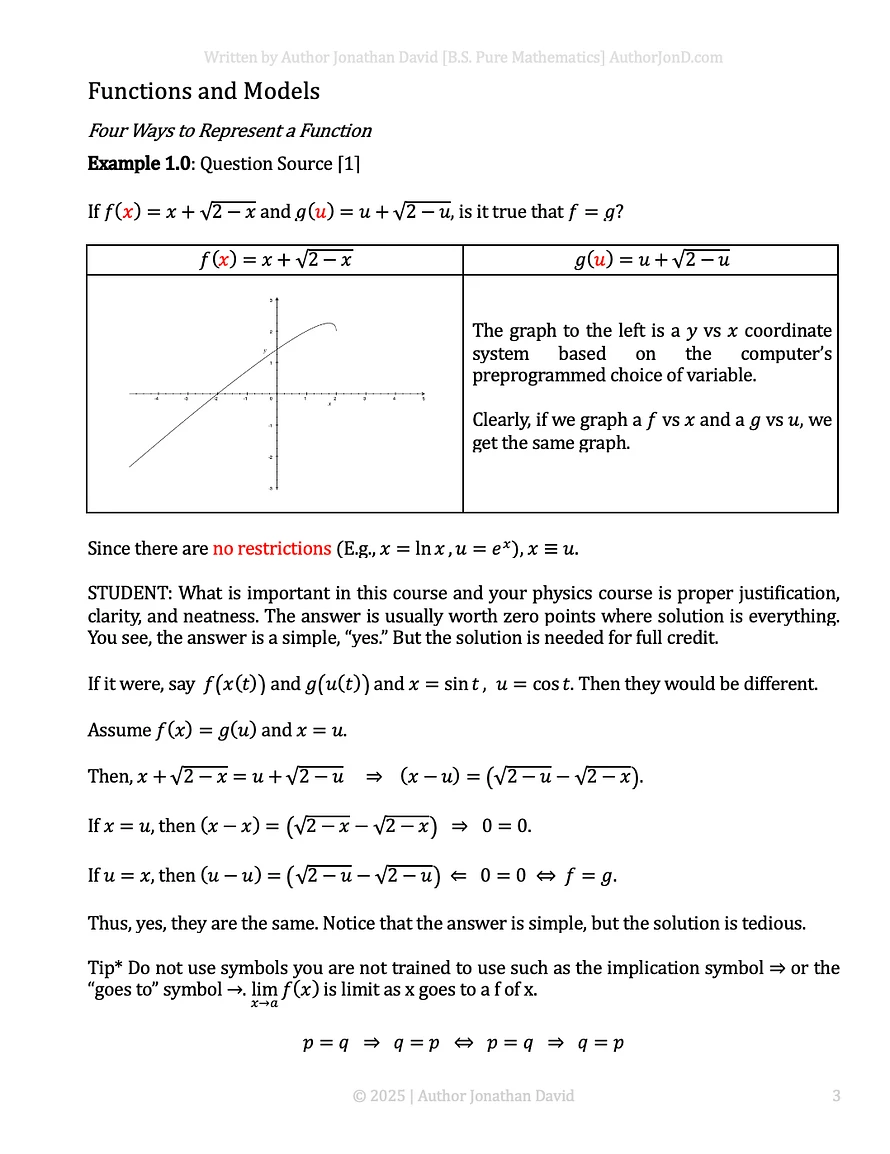Are Two Functions Equal? Understanding Function Equivalence and Variable Substitution
This post unpacks a foundational example in understanding function equivalence—determining whether two functions are the same even if they look different at first. This concept is essential in early calculus and physics courses, where clarity and logic are just as important as the answer.
The Question:
Given
f(x) = x + √(2 – x)
g(u) = u + √(2 – u)
Is f = g?
At first glance, the variables are different—but that doesn’t mean the functions are. The key is to recognize that the functional form is identical when comparing the input and output structure. The post demonstrates that substituting x = u confirms that f(x) = g(u), making the two functions equal in every practical sense.
Key Learning Points:
-
The graph confirms that f and g are the same curve plotted with different variable names.
-
A substitution-based algebraic proof is shown to validate f = g.
-
It stresses proper reasoning and written explanation, not just circling “yes.”
-
A note cautions against using math symbols like → or ⇒ unless you fully understand them.
Final Takeaway:
Just because functions look different doesn’t mean they are. If their structures match under variable substitution, and their domains align, they are the same function.
This problem is pulled directly from the Ultimate Crash Course for STEM Majors, designed to help students learn how to write correct, well-justified math answers for full credit on exams.
Get lifetime access to the crash course here:
https://author-jonathan-david-shop.fourthwall.com/products/the-ultimate-crash-course-includes-bonus-ultimate-cheat-sheet-800-pages-of-goodness
See all function modeling resources and cheat sheets:
https://author-jonathan-david-shop.fourthwall.com
Search tags: how to tell if functions are equal, function substitution algebra, f(x) vs g(u), comparing function forms, modeling functions with different variables, domain-based equivalence, full credit math answer justification, how to prove f = g.

